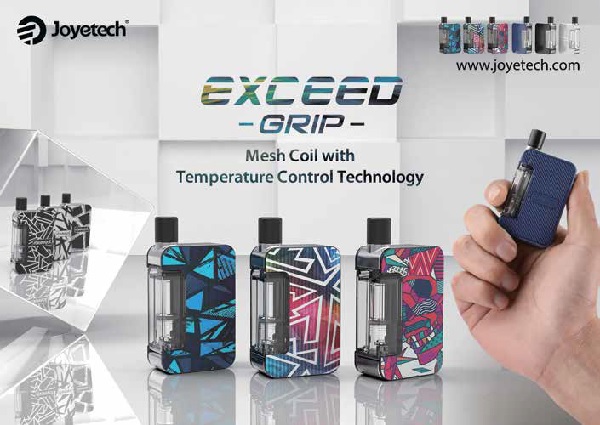During a recent PMTA seminar/webinar, industry experts say submitting a PMTA will seem overwhelming, but it’s not impossible.
By Timothy S. Donahue
It’s going to be a challenge to get it in on time. It’s going to be even more challenging to get electronic nicotine-delivery system (ENDS) products approved. During a Vapor Voice and TMA joint seminar/webinar held in August, “Finding Direction: Navigating the PMTAs,” in Richmond, Virginia, USA, industry experts discussed the challenges and possible solutions to submitting premarket tobacco product applications (PMTA) to the U.S. Food and Drug Administration (FDA).
Companies will need guidance, according to the panel of eight experts representing the legal, clinical, scientific, nicotine and hardware industries. “You can expect to always be seeking the advice of experts,” a panelist said. “They will provide you options, but ultimately the company will have to make the decisions.” The experts recognized that, currently, there is still a level of uncertainty in the industry on whether any products will be approved. The panel reminded the audience that while the FDA guidance is just a suggestion, the protocols laid out are strongly recommended, and the FDA does not charge a fee for submitting a PMTA.
The process can get overwhelming, they agreed. “However, ultimately, what the FDA wants you to do is to demonstrate that you know your ENDS products,” one panelist suggested. “Your goal is to be able to show that you know and understand what you are selling/producing and that you will always be able to provide further information about your product.” The experts also stated that companies should have a dedicated team or individual in charge of the PMTA process. “You are not going to be successful if you have a part-time person doing this,” one speaker noted.
One of the first issues discussed was the standard set forth by the FDA’s final guidance for vapor and e-cigarette products and the requirement that ENDS must be “appropriate for the protection of public health.” This is under the “Public Health Considerations for ENDS Products” section of the final guidance. Companies must be able to demonstrate that their products are no riskier than the products currently on the market. Companies submitting PMTAs must consider the impact of their product on both users and nonusers, according to the panel. “The most sensitive issue facing vapor products is probably youth use,” a speaker said. “This will be a challenge in light of the recent uptick in youth use.”
Whenever a company is working with the FDA, it is advisable to attempt to look at things from the FDA’s perspective. Many speakers had firsthand experience working with the FDA and agreed this is a viable outlook. “There is the potential for nonusers to use vapor products,” a speaker said. “This can be a difficult thing to overcome …. I think, for the FDA, you must put forward a case that the product is directed toward current smokers and not nonsmokers.”
The statute is extremely broadly worded, an expert noted, adding that it would have been beneficial if the agency issued regulations around the regulatory review process, and even though it said it would, it has not. It’s also important to remember that regulations would be binding while the guidance just offers suggestions, albeit highly recommended suggestions. “It certainly represents what the agency thinks,” a speaker said. “There have been two products to gain FDA approval, but no vapor products have yet to be approved. However, looking at the PMTAs for General snus and IQOS, a heat-not-burn device, will give the vapor industry clues about what the FDA expects in a PMTA submission.”
CONSIDERING THE CONTENT
The second section of the seminar/webinar centered on science. The scientific data a company submits must be solid. “The FDA is not going to be looking for an opinion; the FDA wants data to prove [any statements] about your products,” a speaker explained.
The panel also agreed that studies must be conducted in a valid manner that is generally accepted by the scientific community. The scientific evidence must be based on a unified standard—a methodology that everyone can adopt. It was also recommended to consult the FDA for advice. “If there [are] any questions about whether a study would meet the FDA’s expectations, you need to vet them through a meeting with the FDA. The worst that could happen is if you spend a lot of time and money on a study and discover that it doesn’t meet their expectations for whatever reason,” a speaker said. “You may not get a definitive yes or no, but you will get powerful clues as to whether you are on the right track.”
The experts also said that companies should be submitting data from a comparison product, and that product should be a combustible cigarette. Any applicant would be foolish not to look at comparative products when considering the public health standard, one speaker said. “An applicant needs to look at who they are marketing their product to, who is buying the product and how are they using it,” a speaker explained. “How is your product being used in the real world? What product do you hope to displace? I think those are the most relevant comparators.”
There are several different types of studies that the FDA will expect. The panel said that it is important to remember that while the FDA allows for a single PMTA that covers multiple products, with a combined cover letter and table of contents, the FDA will consider the information included for each product as separate PMTAs. “It is imperative that you clearly identify what content pertains to each distinct product,” according to the FDA. “For example, [the] FDA considers each ENDS product with a differing flavor variant and/or nicotine strength to be a different product.”
The experts agreed that it is critical for companies to be honest and forthright in their PMTA submissions to the FDA. In their submissions, companies will have to explain several aspects of their product from company protocols, management and employee training, consumer complaints, product returns and other standards. For example, companies must explain their packaging and how it will influence the product. There must also be shelf life studies, and all packaging must be child resistant. This data can be used for all products, such as e-liquids, that will require a PMTA submission, according to the speakers.
Some of these studies will be very general. For example, when it comes to required nicotine warning labels, the FDA has laid out what the mandatory warnings are, and companies should have warnings on labeling appropriate for their products. Many of these studies can be bridged, which will help lower costs by using one study across many products, according to the experts. Bridging can also be used within a study across multiple products such as nicotine content (see “All Hands on Deck”). When talking about bridging, “bridging to existing data” and “bridging studies” are two separate concepts, an expert explained after the conference. “These are very different concepts, and both are very important,” he said.
SUBMITTING WITH CONFIDENCE
The FDA is careful about not putting itself into a corner, according to one expert. “The FDA is never going to say, ‘You need to do X, Y and Z and you will get a marketing authorization,’” he said. “They will not be so definitive. They will always give themselves wiggle room.” This is another major reason why a company considering submitting a PMTA should seek professional guidance.
During the final section of the seminar/webinar, the panelists discussed content formatting and any advice they can give companies moving forward. “It helps the relationship with [the] FDA that your PMTA is formatted in a way the FDA is used to,” a speaker said. Another expert said that their company has a guidance document that explains how a document should be put together. “There are a lot of little details …. You want things to be presented consistently so the reader doesn’t get tripped up on locating documents all types of different ways,” the speaker said. “There is a very detailed consideration centered around file naming. It has to be a flat file structure; there can be no folder structure. It is one long list of files from top to bottom.”
Consistency is also key, according to the panelists. Companies should not use different formats in their submissions. “[Often], the data is there but the FDA can’t find it,” a panelist said. “It is always better if you have a simple system.” Giving the FDA the ability to find the necessary information is critical, and the experts agreed that forcing the FDA to “hunt” for information is only going to complicate the process. “Remember this is an electronic submission,” another panelist noted. “My advice is to do whatever makes the most sense for you because the FDA will likely come back the other way …. There has to be a logical and rational [direction in] how you group your data.”
Having a strategy is also important, according to the experts. Companies must have a system in place where they can easily pull data and help the FDA with any questions or concerns about a specific section of a PMTA submission, one panelist noted. “If you don’t have a strategy in place, you are already on a risky path,” she said. “It’s time to put your money down and play your cards.” Another panelist explained that it’s all about minimizing risk and increasing the chances of success. “Take your time, and listen to people you trust,” he said. “There is no set-in-stone rule.”
The PMTA is due May 12, 2020, according to the FDA. The experts agreed that if a company is going to submit a PMTA for an ENDS product, it shouldn’t be a “half-hearted” effort. The entire industry is hampered by this new deadline, including the FDA. “There will be very few companies that will have a ready-to-go-as-intended submission by May,” a speaker explained. “It is the FDA’s view that applications have to be complete on submission. The due date and that statement are at odds with each other.”
Lastly, companies should remember that they will have to continue to submit data to the FDA even after a PMTA is approved. The FDA requires ongoing data submissions—this is not a once complete and approved, it’s finished process. “There will be additional costs, and once a product is approved … you will have an annual requirement to provide the FDA with more information,” a speaker said. “Those [studies] will go on in perpetuity until the FDA rescinds the order … and don’t forget, if a company doesn’t follow through with FDA expectations and requirements, the PMTA can be taken away.” Nothing in the ENDS industry is guaranteed, especially the approval of a PMTA. Like one speaker reminded the audience, “The rules are heavily skewed in favor of the government.”

VAPOR VOICE AND TMA TEAM UP TO SERVE THE INDUSTRY
When the District Court of Maryland recently ordered the U.S. Food and Drug Administration (FDA) to move the premarket tobacco product application (PMTA) deadline forward to May 12, 2020, it sent the vapor industry scrambling.
The new deadline is more than two years ahead of the Aug. 8, 2022 PTMA deadline that was established in 2017 when former FDA Commissioner Scott Gottlieb took over his position—but the burden of compliance is equally daunting.
Vapor companies must carry out expensive and time-consuming studies to demonstrate that their products are “appropriate for the protection of public health”—a considerable hurdle, especially given that the FDA guidance has at times raised more questions than answers.
With only nine months remaining, the pressure to get it right is high. Those who fail to meet the FDA’s strict guidelines will have to remove their products from the market and may even be forced out of business.
To help vapor companies navigate the process, Vapor Voice and TMA organized a one-day workshop in Richmond, Virginia, USA, on Aug. 22. Examining the FDA guidance document chapter by chapter, experts in vapor hardware, clinical testing, data collection and regulation shared their knowledge to help participants make sense of the requirements.
The respective strengths of Vapor Voice and TMA ensured a productive conference. Catering to distributors, manufacturers, retailers and wholesalers, Vapor Voice is a leading source of information on vapor industry regulation, legislation, product development and science.
TMA was established in 1915 to provide unbiased information at a time of policy and industry uncertainty and to act as a convener of forums to address pressing issues. Catering exclusively to the tobacco industry at first, the association has in recent years expanded its scope to cover new nicotine products as well.
TMA’s membership includes manufacturers, retailers, suppliers and service providers.




